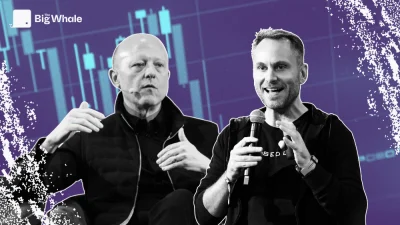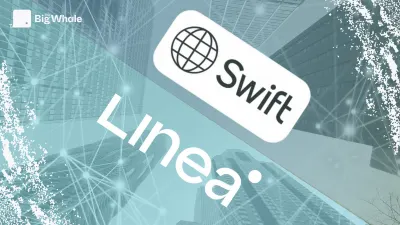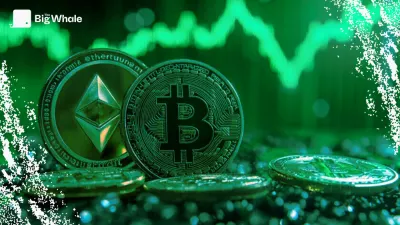TBW - Pump.fun: Analyzing the memecoin factory business model
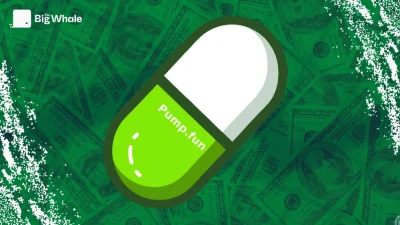
Pump.fun has established itself as one of the most controversial projects in the ecosystem. For some, it is nothing more than a digital casino, a pure speculation engine that feeds the most conspicuous excesses of crypto. For others, on the contrary, it is an example of a simple, viral model capable of generating considerable revenue in DeFi.
Between fascination and rejection, the question remains: does Pump.fun embody a genuine innovation or just another bubble? And beyond the phenomenon, what concrete value can you really attribute to your token?
How does Pump.fun work?
Pump.fun is based on the Solana blockchain and has transformed the creation of tokens into an instantaneous process. Where, traditionally, launching a token required providing initial liquidity on a decentralised exchange such as Raydium or Orca, the platform automates everything thanks to a "bonding curve" mechanism.
Concretely, any user can launch a memecoin in just a few clicks: connect via a Solana wallet, Google or social networks, choose a name and symbol, then validate against a small transaction fee. The token is created immediately and offered for sale on a liquidity curve that adjusts the price according to supply and demand. The liquidity generated is locked in by the protocol, reducing the risk of the creator's rug pull.
When a project reaches 85 SOL injected into the bonding curve (i.e. around $83,000 in capitalisation) the protocol automatically deploys liquidity on Pump Swap, its own trading platform. Until recently, integration was carried out directly on Raydium.
>> Raydium in 2025: A giant's assessment of the new order
Note: token creation is now free. Pump.fun is financed solely by commissions charged on transactions. This model encourages rapid price rises for first-time buyers, but also exposes them to equally brutal corrections. It is precisely this combination of simplicity, virality and virtually zero cost of entry that explains Pump.fun's dazzling success on Solana.
>> Solana and memecoins: an investigation into a toxic addiction
Pump.fun in the ecosystem
With nearly 20,000 tokens created every day, Pump.fun remains the industry benchmark, even if its dominance has eroded slightly in recent months. The platform is often described as a gigantic casino, where everyone hopes to hit the jackpot with the next viral memecoin. On social networks, accounts of sudden fortunes multiply, fuelling the fantasy that a few clicks will be enough to change your life. The reality is very different.
The frantic quest for quick profits has led to some extreme behaviour. Some creators no longer hesitate to stage spectacular challenges to draw attention to their token: a teenager filmed playing Russian roulette, another shaving his eyebrows to celebrate a $10 million capitalisation, or lives where participants lock themselves in a cage or dress up to induce purchases.
These excesses find a direct echo in the protocol's business model: each token launched generates creator fees, paid back to the founder. In the case of the $BAGWORK token, which went from $7,000 to more than $50 million in capitalisation in three days before collapsing, the creators collected more than $316,000 in transaction fees.
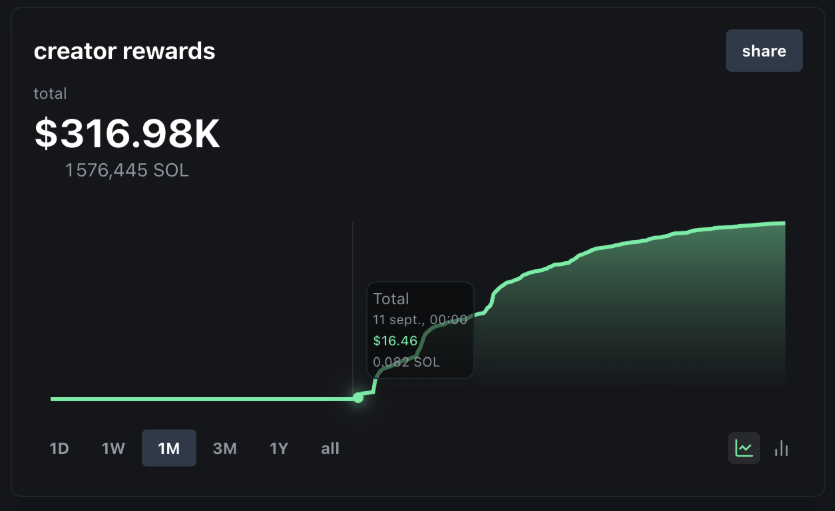
But behind the spectacle, the figures paint a much more nuanced picture. In September 2025, only 41.8% of active wallets made a profit, compared with a loss of 58.2%. And even among the winners, the majority only pocketed limited amounts: more than 37% of profitable addresses only earned a few hundred dollars. Only 0.35% of addresses won more than $10,000, and just 0.0097% more than $100,000.
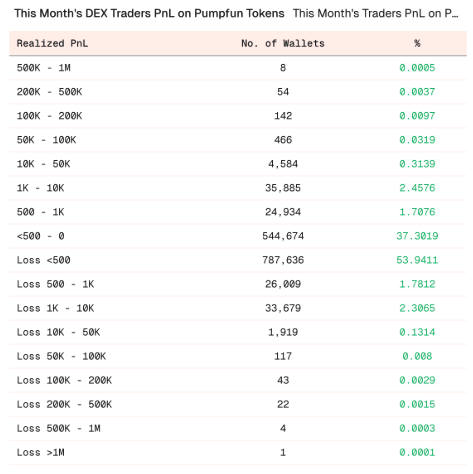
In other words, the success stories circulating on X remain the exception and often concern organised players, or even insiders with sophisticated strategies. For the average investor, the outcome is usually unfavourable.
Despite everything, Pump.fun has several aspects that explain its popularity. The protocol has democratised the creation of tokens, removing the technical and financial barriers.
Everyone can launch their token in a matter of seconds, federate a community or test new forms of monetisation. This creative aspect is amplified by the viral effect of memes and livestreams, which have become a central engagement tool. Unlike a traditional launch on a DEX, the platform also imposes certain security rules, notably the automatic locking of liquidity, limiting rug pulls.
It is this combination of accessibility, creativity and relative security that makes Pump.fun a central player in the Solana ecosystem. But while the platform has paved the way for new forms of experimentation, the majority of its users remain losers, confirming that the Eldorado promised by memecoins is reserved for a privileged few.
One of the biggest cash machines in the industry
Behind its image as a speculative playground, Pump.fun is above all a cash machine. In just under 19 months of existence, the platform has already raked in more than $1.01 billion in fees, including $829 million in net revenue once the shares paid back to creators are deducted.
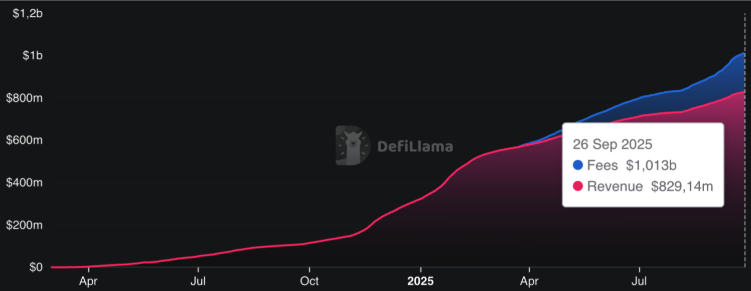
For several months, the protocol has been among the most profitable projects in the entire crypto ecosystem. In September 2025, it ranked 4ᵉ in terms of revenue, just behind Tether, Circle and Hyperliquid. Its cruising speed is impressive: between $30 and $40 million a month, steadily since the start of the year.
The model is simple but frighteningly effective. The creation of tokens is free, but Pump.fun is remunerated via the fees applied to swaps. There are three distinct categories: creator fees, paid directly to token founders; protocol fees, captured by Pump.fun on each purchase or sale; and finally migration fees levied when a token's liquidity moves to Pump Swap (0.015 SOL fixed, plus a variable percentage depending on capitalisation).

The fee structure is calibrated to concentrate revenues in the most active area. Almost 99% of tokens created never reach 420 SOL market cap. In other words, it is this intermediate segment, where volume is highest, that is the protocol's main source of revenue.
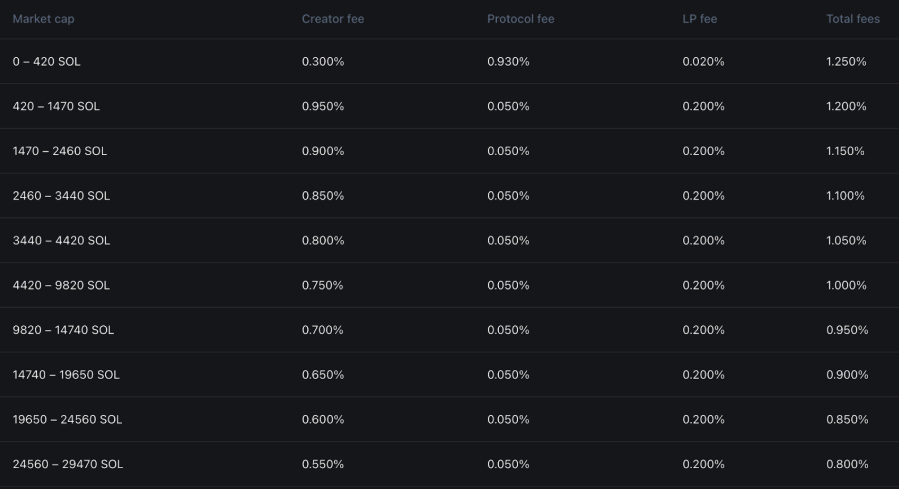
In addition, there is a feature common to many DeFi protocols: Pump.fun operates without the heavy burdens of a traditional company. No thousands of employees, no offices, no massive marketing expenditure. Every dollar generated is therefore "pure" revenue, with margins far higher than those of Web2 players.
Creator fees also play a key role. They turn creators into relentless promoters, prepared to do anything to generate volume. Livestreams (video) have pushed the phenomenon to its climax by attracting a wave of hyper-mediatised projects, before running out of steam. But the mechanics remain intact: every day, between 20,000 and 25,000 tokens continue to be created on the platform.
Faced with such numbers, competitors were quick to jump in. Platforms such as Boop.fun (BOOP) and LetsBonk.fun (BONK) have tried to copy the model. In July, LetsBonk even managed to overtake Pump.fun for a few days with $1.7 million in daily fees. But the boom soon fizzled out: today, it generates just 30,000 to 50,000 dollars a day. With lower liquidity and a less mobilised community, these alternatives are struggling to exist in the face of Pump.fun.
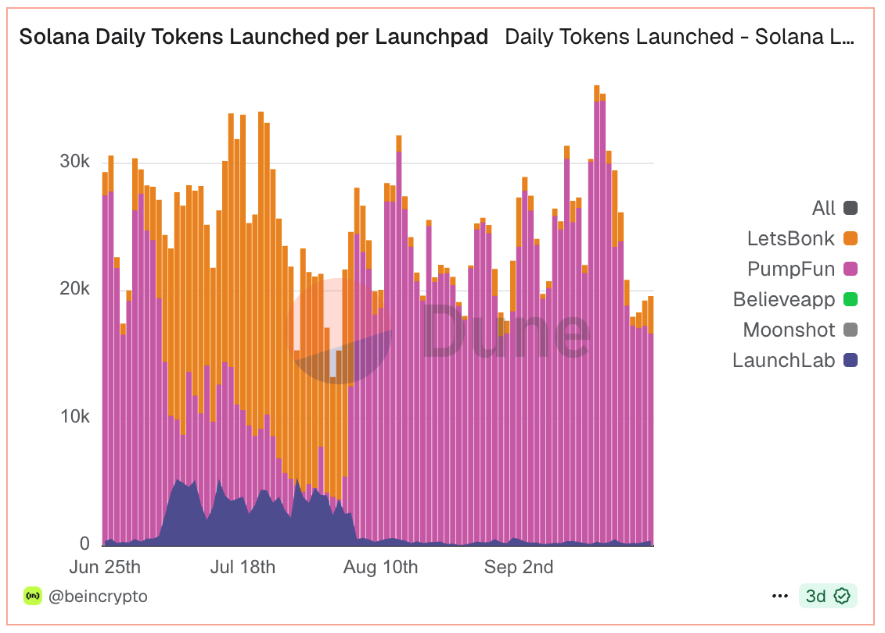
For traders, the choice remains quickly made: why go elsewhere when the experience is smoother, the community more active and the liquidity deeper on Pump.fun?
The PUMP token
Launched in mid-July, right in the middle of summer, the PUMP token was expected to be Pump.fun's chance to reward its community with an airdrop. In the end, the platform took everyone by surprise by opting to raise funds.
No less than 33% of the total offering was allocated to the ICO, with 18% reserved for institutional investors via a private sale and 15% open to the public. The latter segment was sold out in less than 12 minutes, bringing in more than $1.3 billion in additional proceeds to the protocol alone.
To date, no airdrop has been announced, maintaining uncertainty around a possible future redistribution.
The total PUMP offering is set at 1 trillion tokens, distributed as follows:
- 33% for the ICO (≈ 330 billion)
- 24% dedicated to community and ecosystem initiatives
- 20% allocated to the team
- 13% for existing investors
- 3% allocated to live streaming activities
- 2,6% for liquidity and exchanges
- 2.4% for the ecosystem fund
- 2% for the foundation
This distribution, heavily weighted by the ICO and the team, raises questions about the future governance of the project and the real room for manoeuvre left to the community.
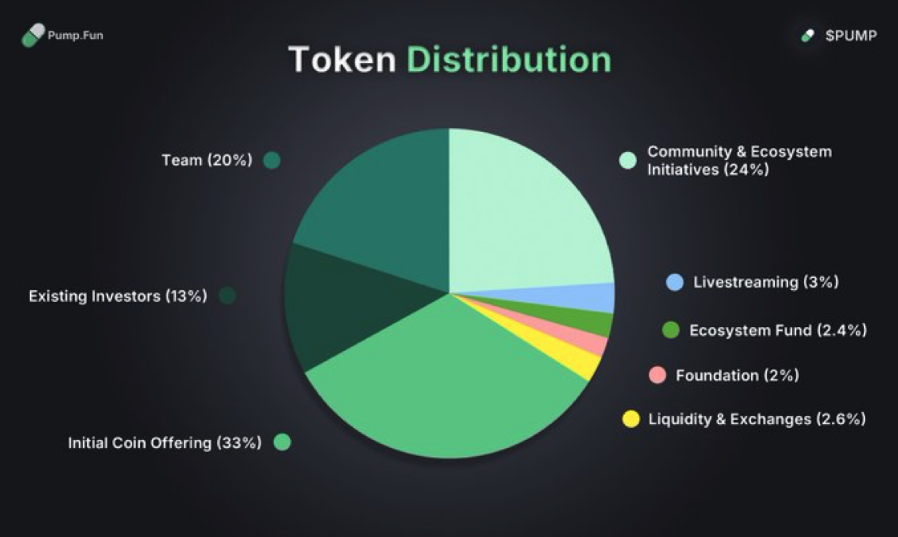
How the PUMP token benefits from the cash machine
Behind its launch, the PUMP token relies on a central mechanism: token buybacks financed by fees generated on the platform. A common practice in DeFi, but one that takes on a different scale here.
Pump.fun's revenues are such that buybacks are reaching an unprecedented level: in just over two months, almost 7.5% of the supply has already been bought back, a rate equivalent to 37% per year. Every day, more than a million dollars are spent on these operations, sometimes even exceeding the protocol's net revenues, in a deliberately aggressive strategy designed to support the share price.
This arrangement illustrates Pump.fun's ability to reinvest part of its financial windfall to strengthen the perceived value of its token. This is also one of the advantages of having raised so much money: the team can freely adjust the buyback percentage and maintain upward pressure.
Beyond buybacks, several avenues of usefulness have been mentioned: fee reductions for creators and traders holding PUMP, streaming-related incentives, or a governance role. Some allocations earmarked for community initiatives or streaming have yet to be distributed, leaving the door open to future reward schemes for the most active users.
The fact remains that, for the time being, PUMP retains an essentially speculative profile. Its price fell sharply after its launch, due to rapid sales from the ICO, before rebounding in August to close in on its initial level.
How long it lasts will therefore depend on Pump.fun to convert its record revenues into lasting value for its holders, and no longer just into a token backed by a "cash machine" fuelled by speculation.
The Big Whale's opinion
There are two opposing visions surrounding Pump.fun. For some, it embodies the worst of crypto: a giant casino where speculation reigns and the overwhelming majority of participants end up losers. For others, on the contrary, it represents the best of this universe: a simple, viral and extremely lucrative platform.
Whether you like it or criticise it, Pump.fun's place in the ecosystem today is indisputable. The protocol regularly features among the five most profitable crypto projects, proof of a business model that is perfectly suited to its market. Its success is based less on a technical breakthrough than on a keen understanding of the codes of crypto culture, its community dynamics and the irresistible attraction of quick wins.
Memecoins are part of the sector's DNA: the promise of turning a few dollars into a fortune, the telling of dazzling stories that feed the collective imagination. Pump.fun has harnessed this energy by structuring it into a product that is accessible, secure and calibrated for volume. It's not roulette or poker, but the human mechanics are the same: the often illusory hope of being one of the rare winners.
At the end of the day, if it wasn't Pump.fun, another platform would have taken its place. Because its success owes nothing to chance: it's based on a relentless product-market fit. More than a passing bubble, Pump.fun is the reflection of an era and a very real demand. A project that, in less than two years, has already made its mark on Solana's history and continues to shape the contours of the crypto ecosystem.
>> Why memecoins are a lasting trend in cryptos

